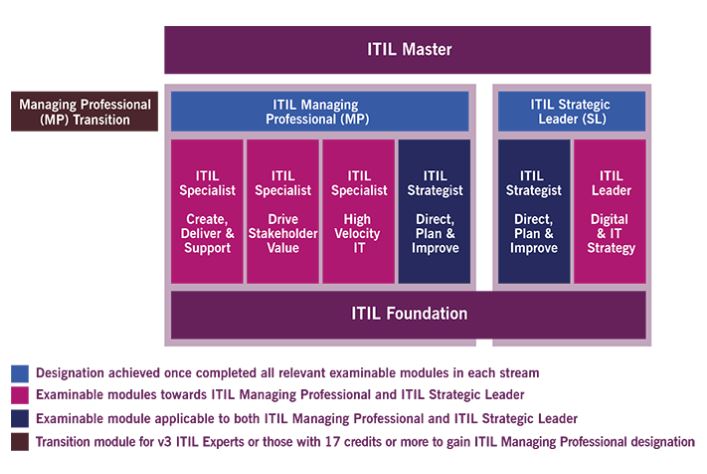Think slow and hard about that statement; Drive Stakeholder Value! Sometimes we see and use terminology so much that the power of the statement gets lost. This is one we must hear and ignite if we have any hope of meeting the evolving door of consumer requirements.
The Drive Stakeholder Value (DSV) certification course is available within the ITIL 4 Managing Professional stream of certification.

ITIL 4 Managing Professional Transition is a course that provides ITIL Experts or those that have at least 17 ITIL v3 credits a fast-track way to obtain the ITIL Managing Professional certification. This course excerpts key concepts from ITIL 4 Foundation and from each of the four Managing Professional modules.
Mapping the customer journey is a required skill set for all current service providers and IT service management professionals. This course helps professionals to hone that skill, ensure excellent customer experience (CX) and user experience (UX) design, and create a competitive advantage. If that is not enough, this course of study also covers key topics such as real and effective Service Level Agreement design, Supplier Management, Communication, Relationship Management and much more.
In order to drive stakeholder value service providers must have the tools to increase stakeholder satisfaction. ITIL 4 Drive Stakeholder Value is helping us to do just that. Take action!
Therefore, DSV is also a module and one of the focus areas in the Managing Professional Transition (MPT) class.

ITIL 4 Managing Professional Transition is a course that provides ITIL Experts or those that have at least 17 ITIL v3 credits a fast-track way to obtain the ITIL Managing Professional certification. This course excerpts key concepts from ITIL 4 Foundation and from each of the four Managing Professional modules.
The Managing Professional stream of certification courses targets IT practitioners working within technology and digital teams across businesses. This stream provides practical and technical knowledge about how to run successful IT-enabled services, teams and workflows. It includes the four courses shown above, one of which is Drive Stakeholder Value.
The Drive Stakeholder Value module in the ITIL 4 Managing Professional Transition course contains roughly 40% of the content covered in the full certification course. It focuses on the customer journey and the various types of touchpoints and interactions that must take place for a service provider and customer to co-create value. It does not focus on the associated practices. Those are covered in the full DSV certification course.
The Drive Stakeholder Value module in the ITIL 4 Managing Professional Transition course contains roughly 40% of the content covered in the full certification course. It focuses on the customer journey and the various types of touchpoints and interactions that must take place for a service provider and customer to co-create value. It does not focus on the associated practices. Those are covered in the full DSV certification course.
The Drive Stakeholder Value certification course, with interleaved activities and discussions, helps practitioners to think and work holistically and to understand the importance of stakeholder engagement throughout the conversion of customer demand into value for IT-enabled products and services.
Mapping the customer journey is a required skill set for all current service providers and IT service management professionals. This course helps professionals to hone that skill, ensure excellent customer experience (CX) and user experience (UX) design, and create a competitive advantage. If that is not enough, this course of study also covers key topics such as real and effective Service Level Agreement design, Supplier Management, Communication, Relationship Management and much more.
In order to drive stakeholder value service providers must have the tools to increase stakeholder satisfaction. ITIL 4 Drive Stakeholder Value is helping us to do just that. Take action!
To learn more; consider the following ITSM Academy certification courses:




Comments